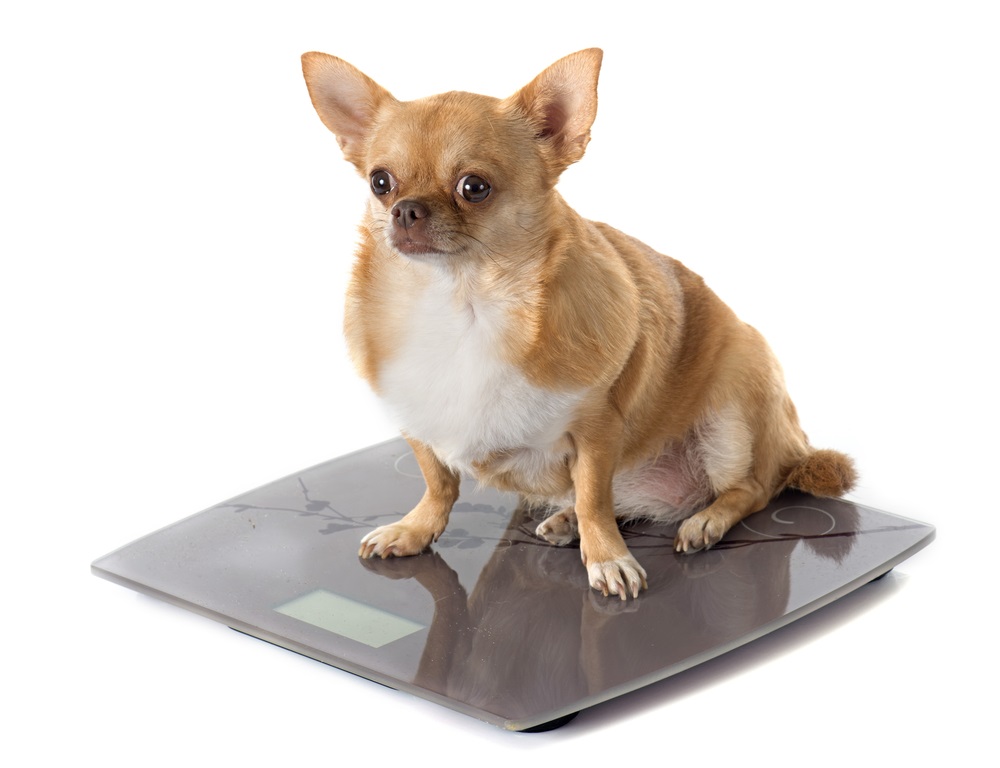Does Your Pet’s Weight Affect Her Health?

How can you tell if your pet is overweight?
To tell if your pet is overweight, start by running your hands over her body, from head to tail. You should be able to feel, but not see, her ribs. If you cannot easily feel your pet’s ribs, they are covered by an unhealthy layer of fat. Next, place your pet in a standing position and look at her abdomen from the side. Her stomach should have a noticeable tuck if she is in good condition. Then, view her from above. You should see a narrowing around her midsection. The lack of a waist or abdominal tuck indicates that your pet is too heavy. Your family veterinarian can also assess your pet’s body shape and assign a body condition score (BCS), which will help guide her weight-loss goals.How can being overweight affect your pet’s health?
Being overweight can negatively affect your pet’s health in many ways, including:- Increased joint strain
- Increased stress on her heart
- Difficulty breathing
- Increased risk of diabetes development
- Increased risk of high blood pressure
- Increased anesthetic risk
- Decreased immune function
Fortunately, many of these health risks will be reduced if you help your pet become more fit by improving her diet and exercise.
How can you improve your pet’s diet?
Choosing your pet’s diet can be overwhelming when so many choices fill pet-store shelves. Your family veterinarian can advise you about high quality foods that would be good choices for your pet. She can also calculate how many daily kilocalories your pet should eat, which you can use to determine the exact amount of food she should receive at each meal.Most pets will often overeat if permitted to free feed, so feeding your pet timed meals is important. Dogs should have their total food volume divided into two meals, fed in the morning and at dinnertime. If you are not feeding your dog this way, start by offering food for only 20 to 30 minutes at mealtime. Remove whatever she does not eat, so she does not nibble throughout the day. This will make her hungry for her next meal, and her body will quickly adjust to eating at specific times.
Cats are natural grazers, and while some cats are happy to eat on a schedule, many will not adapt to timed meals; however, limiting their food intake is still important. Your cat’s total daily food allotment should be divided into two portions fed at specific times, but you do not need to remove food that is not immediately eaten. Your cat will likely visit her food bowl many times throughout the day, eating only a few bites each time.
You should limit your pet’s treats, as well as her food. Feeding a few healthy pet treats per day is OK, as long as you account for the number of kilocalories, and subtract them from her total daily food intake. Also, never give table food to your pet, because most human food is too high in fat and calories, and can contribute to unhealthy weight gain.
How can you increase your pet’s activity?
Start by taking your pet on a short daily walk, and then increasing your distance each week until you are walking at least a mile each day. As you both become more physically active, you can advance to a slow jog. Increase slowly, and never push your pet if she seems to be struggling. As spring approaches, consider signing up for a pet-friendly 5K to motivate you to continue your good habits. Other activities that will get you and your pooch moving together include:
- Games of fetch
- Hiking
- Camping
- Agility training
- Canine sports
If you have questions about your pet’s weight, or how to begin a weight-loss program, contact your family veterinarian. If your pet has been diagnosed with a weight-related health condition that requires specialty care, contact us.

